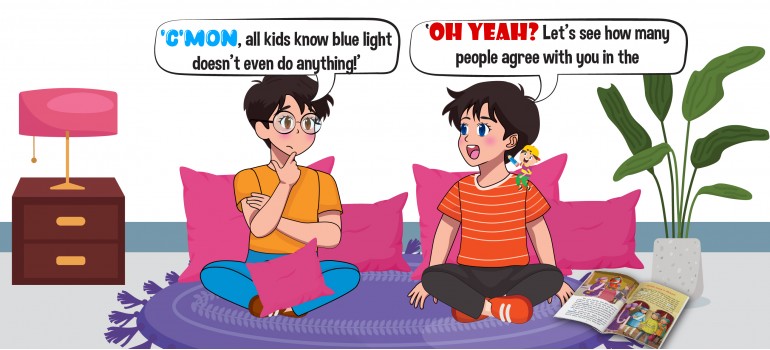Let’s Trade Blue Light for Book Light
Let’s
Trade Blue Light for Book Light
How much blue light are we really absorbing each day? With
laptops, TVs and phones part of daily life, screen time now averages 6–9 hours
a day. Children, especially, are exposed more than ever—raising concerns about
the link between blue light and myopia (nearsightedness).
So, what exactly is blue light and how does it affect our
eyesight? And most importantly, what is the cure?
What is Blue Light?
Blue light is a high-energy visible light with short wavelengths (400–490 nm). While
sunlight is the main source, screens are becoming the biggest contributors to
overexposure. Our eyes cannot block blue light well, so it reaches the retina
directly. While some blue light helps with alertness and mood, too
much—especially from screens—can lead to eye strain, headaches, dry eyes and
sleep disruption.
Why Kids Are at Greater Risk?
The situation is worse for children and teens, as they are
glued to their screens—from watching TV in the morning to spending time on
social media throughout the day. Unlike adults, their eyes are still
developing, making them more vulnerable. Resultantly, the blue light not only
affects their sleep patterns but also reduces focus and creative thinking.
What Exactly is the Cure?
The cure to this problem is reintroducing children to books.
Unlike screen-based content, books are not designed to keep you hooked—they are
made to help you grow and inspire. Reading boosts vocabulary, concentration,
emotional intelligence and even empathy. When kids swap screens for stories,
they are not just calming their minds—they are exercising their imagination.
It is not about banning screens altogether; it is about
balancing them with something more meaningful.
So, how about a new bedtime routine? Replace late-night
scrolling with late-night storytelling. Let your child pick their favourite
book and explore magical worlds one page at a time. Because the best kind of
light—the one that truly lasts—is the light from a good book.





